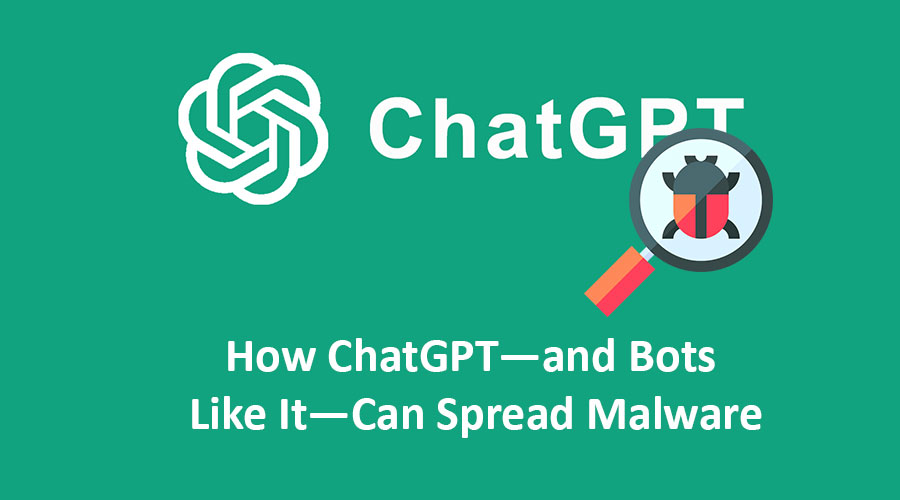
In today's interconnected world, artificial intelligence (AI) has become a powerful tool, revolutionizing various aspects of our lives. ChatGPT, an advanced language model developed by OpenAI, has garnered significant attention for its ability to generate human-like text. However, as with any technology, there are potential risks and vulnerabilities associated with the misuse of such AI-powered systems. This article aims to shed light on the subject of how ChatGPT, and bots similar to it, can inadvertently become vehicles for spreading malware, compromising security, and causing harm.
The Rise of ChatGPT and Similar Bots
ChatGPT is a state-of-the-art language model that uses deep learning techniques to generate coherent and contextually relevant responses in conversation-like settings. Its capabilities range from assisting with everyday tasks to providing information on a wide array of subjects. These bots have gained popularity due to their potential to automate customer support, enhance productivity, and engage users in realistic conversational experiences.
ChatGPT's Vulnerability to Exploitation
While ChatGPT and similar bots have brought numerous benefits, their functionality also introduces potential security risks. These AI models can be manipulated and exploited to spread malware through social engineering techniques. Hackers with malicious intent may use these bots to deceive unsuspecting users and exploit their trust.
Social Engineering Attacks Leveraging Bots
ChatGPT and other AI bots are designed to simulate human-like interactions, which can make them effective tools for social engineering attacks. By impersonating a trustworthy entity, cybercriminals can manipulate unsuspecting users into clicking malicious links, divulging sensitive information, or executing harmful commands.
- Phishing Attacks: ChatGPT can be programmed to generate realistic phishing messages, luring individuals into providing sensitive information such as passwords or credit card details. The integration of natural language understanding and generation capabilities can make these messages appear more authentic and persuasive.
- Malicious URL Distribution: Bots can be exploited to distribute malicious URLs that lead users to websites hosting malware. The bots can trick users into clicking on these links by disguising them as legitimate or interesting sources.
- Malware Delivery: AI-powered bots can be utilized to deliver malware payloads to unsuspecting victims. By sharing seemingly harmless files or documents that contain malware, attackers can gain unauthorized access to sensitive information or take control of systems.
Preventive Measures and Mitigation Strategies
To combat the potential risks associated with ChatGPT and similar bots, it is essential to implement robust preventive measures and mitigation strategies. The following steps can help enhance security and reduce the likelihood of bots being used as vehicles for malware distribution:
- Stringent User Verification: Implementing user verification mechanisms can ensure that bots are not misused by unauthorized individuals. This can involve the use of captchas, two-factor authentication, or other forms of identity verification to prevent automated abuse.
- Content Filtering and Moderation: Employing comprehensive content filtering and moderation mechanisms can help identify and block malicious or suspicious content generated by bots. Advanced algorithms can be employed to flag and investigate potentially harmful messages before they reach end-users.
- Security Awareness and Education: Raising awareness among users about the risks associated with AI bots and social engineering attacks is crucial. Educating individuals about the signs of phishing attempts, safe online practices, and the importance of skepticism can help mitigate the impact of malicious activities.
- Continuous Model Improvement: Developers of AI language models should continue to refine their models to recognize and prevent the generation of potentially harmful content. By implementing rigorous testing and ongoing model updates, the risks associated with unintended malicious outputs can be minimized.
- Collaborative Efforts: Developers, security experts, and users must collaborate to identify and address potential vulnerabilities. Sharing knowledge, best practices, and threat intelligence can help build a robust defense against evolving threats.
Conclusion
The advent of AI-powered chatbots like ChatGPT has transformed the way we interact with technology. While they offer immense benefits and possibilities, these bots are not immune to exploitation by malicious actors. The potential for spreading malware through social engineering attacks presents a serious concern. By understanding the vulnerabilities and implementing effective preventive measures, we can safeguard ourselves against these risks. Collaboration, continuous improvement, and user education are key elements in harnessing the potential of AI bots while minimizing the threats they pose. As technology advances, it is imperative to remain vigilant and proactive in addressing emerging security challenges to ensure a safe digital environment for all.




